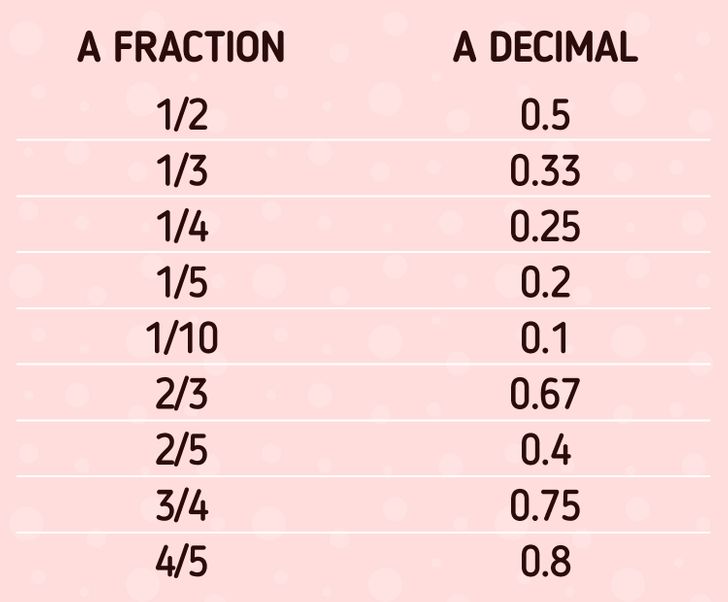How to Convert a Fraction Into a Decimal
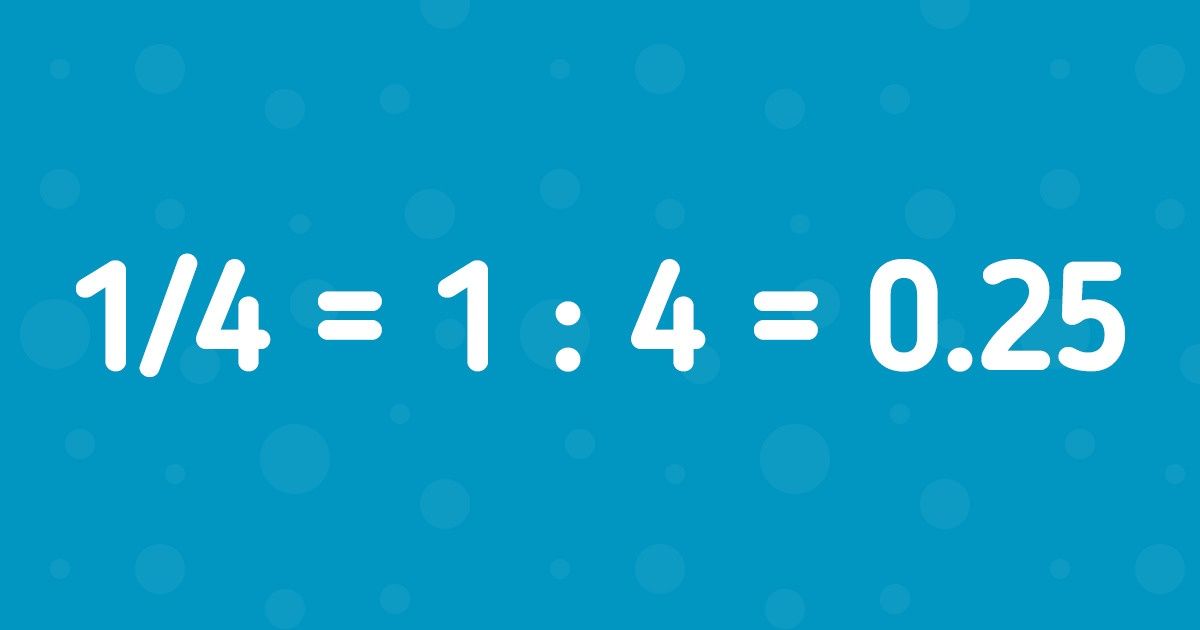
A fraction represents a part of a whole or, more generally, any number of equal parts. A fraction describes how many parts of a certain size there are, for example, one-half, eight-fifths, three-quarters.
5-Minute Crafts would like to tell you what the difference is between a common fraction and a decimal, and how to convert one into the other.
What is a common fraction?
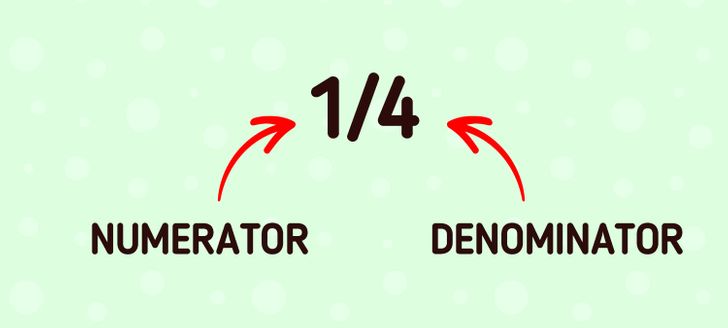
A common fraction consists of 2 numbers: a numerator and a denominator. These 2 numbers are divided by a line or a slash, like this 1/4. The line represents the operation of division.
The upper number is a numerator. It shows how many of the parts indicated by the denominator are taken. The lower number is a denominator. The numerator should be divided by the denominator. This means that 1/4 is one part of the 4 parts available.
What is a decimal?
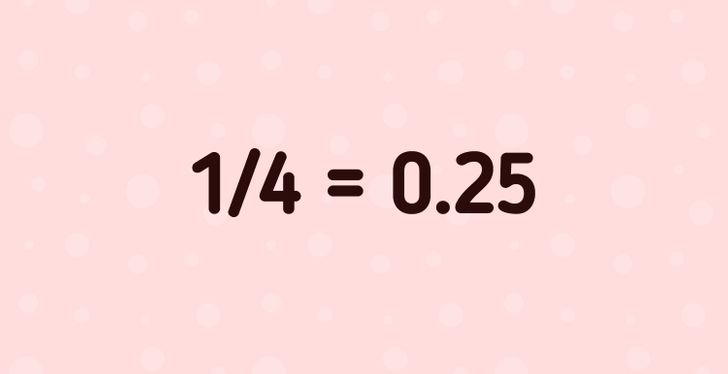
A decimal fraction is written without a line or a slash. It’s a part of a whole whose denominator is some power of 10, usually indicated by a decimal point placed before the numerator.
The common fraction 1/4, for example, looks like 0.25 as a decimal (twenty-five hundredths). This number has a power of 100. Here, 25 is the numerator, and 100 is the denominator.
How to convert a common fraction into a decimal?
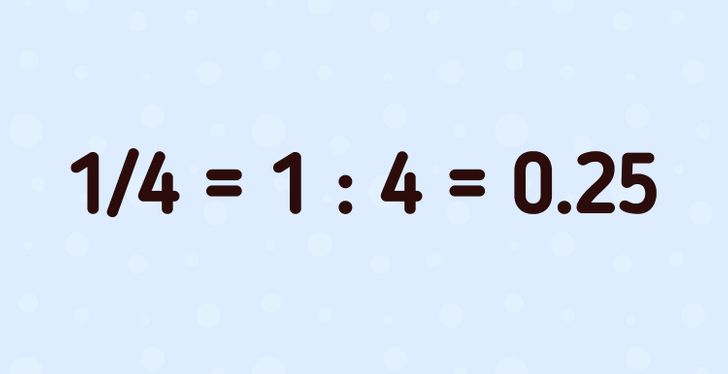
Divide the numerator by the denominator — you can use long division or a calculator.
To divide 1 by 4 in line with the rules of long division with remainders, add 2 zeroes after 1, and write down the result after the dot. In this case, you’ll get a decimal with the power of 100, or 0.25.
How to check the division answer: multiply the result by the denominator of the common fraction. In our example, it’s 0.25×4. You’ll get the numerator — 1.
Bonus: Widespread decimals and their analogues among common fractions
